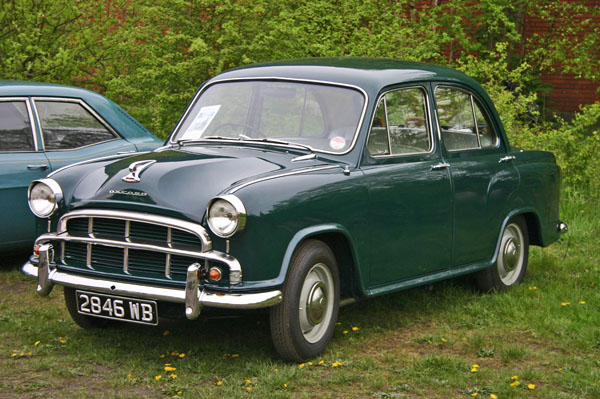
The Morris Oxford Series II was powered by a 1489 cc four-cylinder BMC overhead-valve engine which developed approximately 37 kW. It had a three-bearing crankshaft with a renewable element external oil filter. Whilst the manufacturer rated the performance as exciting – with power, flexibility and astonishing fuel economy when it was released as a medium sized sedan – compared with today’s baby cars it was a very poor performer.
One of its best attributes was the body, especially the wide door openings that gave direct access to the seats. Efficient checks on each door meant that they could be set in the fully open position whatever the angle of the car. This feature alone was enough to make the Morris Oxford a suitable vehicle for taxi work in a number of countries. In fact, in places like India, it is still used for this purpose as six persons can be accommodated on the bench seats, albeit at a squeeze.
The wide-bowed windshield with its narrow pillars meant that the driver had a clear vision of the road but the plastic instrument panel was a rather spartan affair with twin dials. One incorporated the speedometer with trip and total distance recorders and electric clock the other the fuel gauge, oil pressure gauge, ammeter and radiator temperature indicator. Also dash mounted were the ignition switch, windshield wiper switch, choke, two-position lamp switch, ventilator motor switch and the panel light switch. An interesting addition was the indication light which showed when the headlights were switched on.
The mono construction four-door saloon body incorporated the body shell, floor, bulkhead, frame members, wing valances and rear wings. The whole body was treated for rust prevention before assembly. Independent suspension with long torsion bars and hydraulic telescopic-type shock absorbers was fitted at the front and at the rear there were rubber-mounted semi-elliptic springs controlled by hydraulic shock absorbers with an anti-sway type of mounting. Drum brakes were fitted all round with the hand brake operating the rear shoes only.
In addition to the sedan the car was also produced as a utility vehicle and a station wagon known as the Morris Oxford Traveller. In this form the four doors gave a saloon style comfort without reducing luggage space and the all-steel body had a particular appeal in many countries where it was sold.